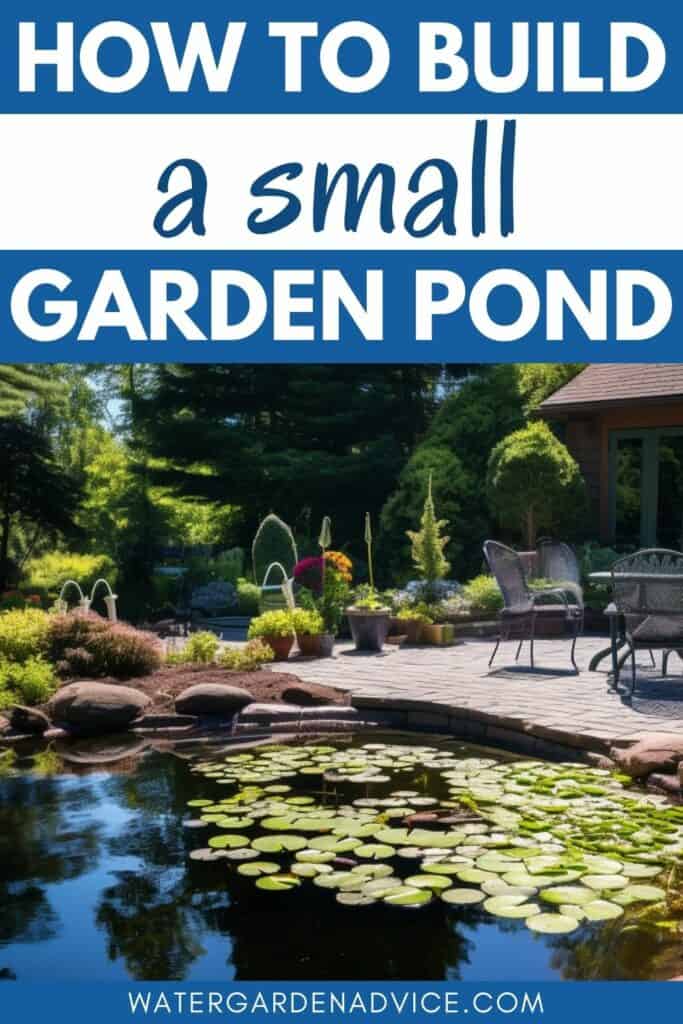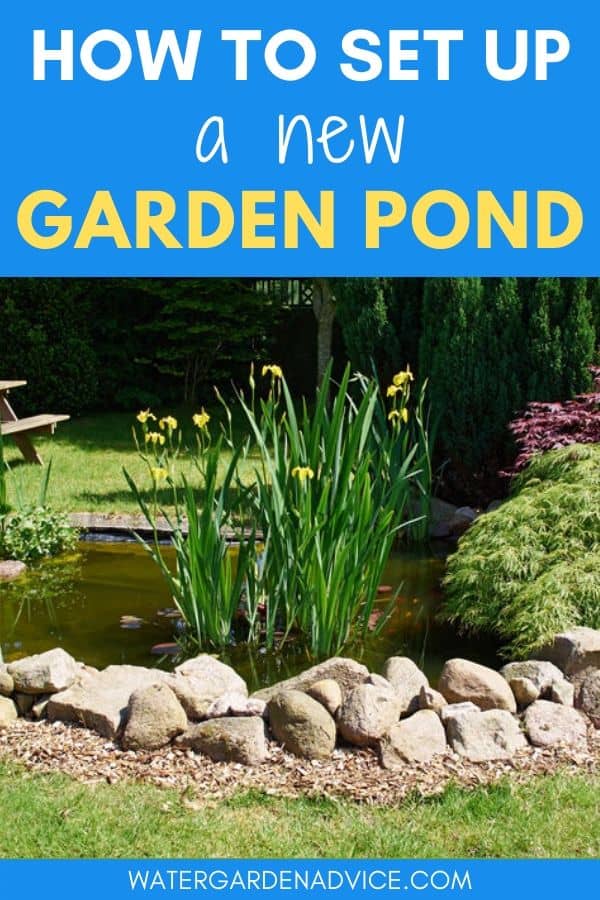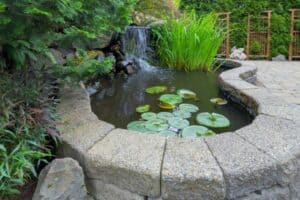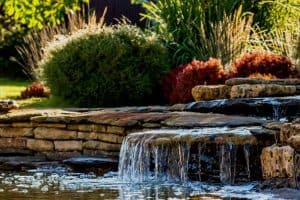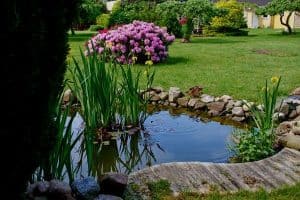Installing a new backyard pond can turn your yard into a calming oasis, but there are lots of things to consider when planning your pond.
Here are some important things to keep in mind before you start building your new pond.
This post about garden pond construction contains affiliate links. Please read the disclosure for more info.
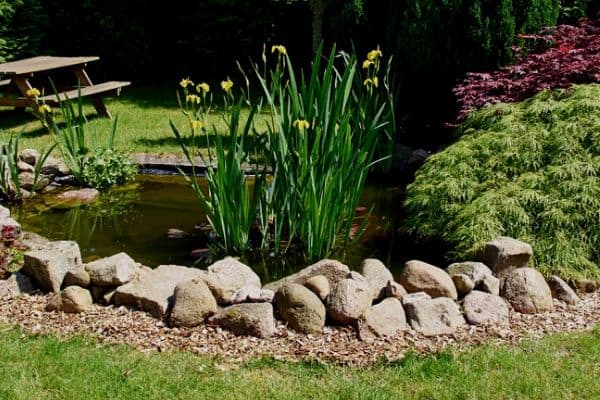
Choosing a location for your pond
- The best location for a backyard pond is somewhere that receives morning sun and afternoon shade.
- Ponds located in full sun without any shade can heat up quickly, especially during the hot summer months. This reduces oxygen levels in the water and increases the likelihood of an algal bloom.
- Most pond plants need at least five to six hours of sunlight each day to grow and bloom.
- Leaves from overhanging trees falling into the pond can be a real problem, so it’s best to situate your pond away from trees, especially deciduous trees. Tree roots growing underneath the pond can also create tears in the pond liner.
- It’s best to avoid building a pond in a valley or low spot in the backyard that can flood during heavy rain. Ponds located in low lying areas can also be contaminated by runoff from fertilizers and pesticides used in the garden.
- Before you start digging your pond, check to make sure that there aren’t any electricity cables or pipes underneath the ground.
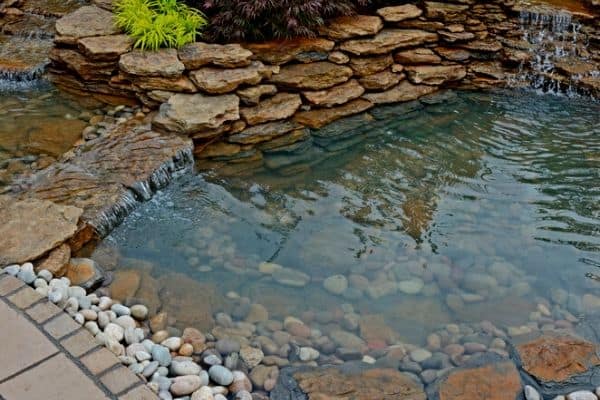
Choosing a pond liner
Preformed ponds and pond liners are the two most common pond lining options and they both have their advantages and disadvantages.
Preformed ponds are strong enough to withstand tree roots and rocks falling into the pond.
They’re ideal for constructing a small pond but there are limited shapes available and freight can be expensive.
Preformed ponds can also lift up out of the ground if there isn’t enough water in the pond to weigh it down. This makes it hard to drain the pond to clean it.
Pond liner is another option for lining your pond. It’s made from synthetic rubber which is durable and flexible.
Most pond liners are thick enough to withstand damage from rocks falling into the pond and tree roots, but there are patch kits available if the liner becomes torn.
Installing a pond liner takes a bit more time and expertise but you can create the pond in the exact shape you want, including different depths and shelves around the edge of the pond.
Related: Preformed Ponds Vs Pond Liners
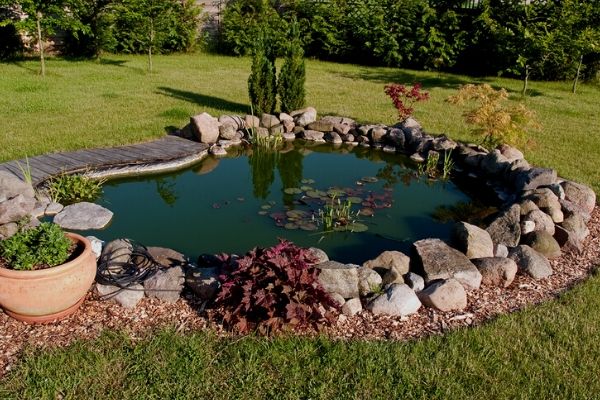
Which type of pond?
Are you planning to stock your pond with fish?
If you live in a cold climate you’ll need to choose fish that can tolerate cold temperatures like golfish or koi. Also, keep in mind that big fish will eat many types of smaller fish. [1]
If you don’t have fish in your pond you can create a wildlife pond that will attract frogs, birds, dragonflies, water snails and many other animals to your pond.
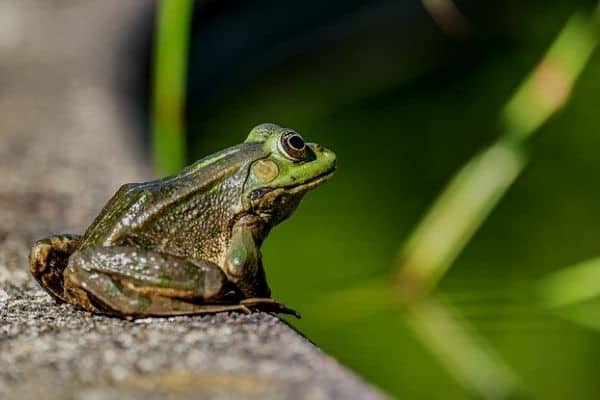
Pond Edging
Pond edging options like rocks, plants and pavers not only enhance the appearance of the pond, they also conceal the pond liner and help the pond to blend into the surrounding landscape.
You can lay rocks around the entire edge of the pond or use pebbles in a small section to create a beach area where frogs and other wildlife can get in and out of the pond.
Pavers can also be laid around the edge of the pond and extended out further to create a sitting area next to the pond.
Related: 7 Beautiful Pond Edging Ideas
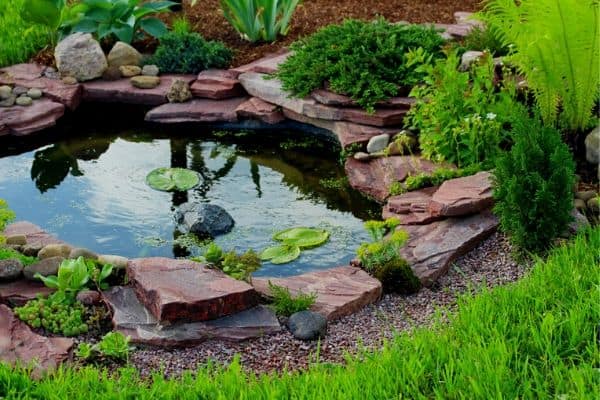
Adding water
Tap water can be used to fill up a new pond but you’ll need to leave it for a day or two to allow the chlorine to dissipate.
When you have fish in your pond you can use a dechlorination solution to remove the chlorine or allow the water to sit in buckets for a couple of days before adding it to the pond.
Pond Plants
Aquatic plants not only beautify a pond, they also help to improve the pond’s ecosystem.
- Bog plants like canna lilies and irises provide shelter for frogs and other wildlife that visit the pond and help to stabilize the area around the pond.
- Marginal plants like lotus and water lilies can be planted in pots and placed on the bottom of the pond or on shelves built in to the side of the pond.
- Floating pond plants don’t need soil and drift around on the surface of the pond. Water hyacinths and water lettuce are popular floating pond plants but they need to be managed closely because they can easily become overgrown and cover the entire surface of the pond.
- Submerged plants like hornwort help to oxygenate the water and they’re a good choice if you have fish in your pond.
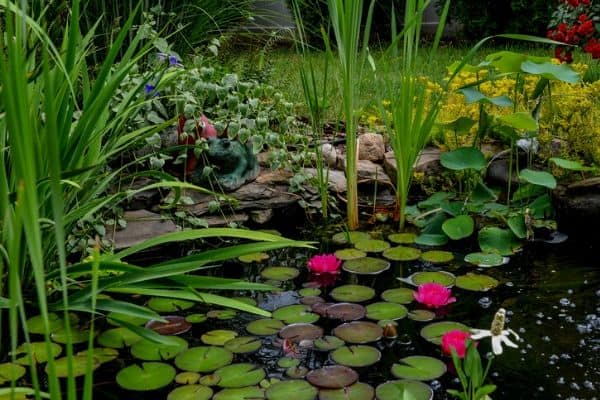
Pond aeration
Aeration benefits the plants, fish and beneficial bacteria in the pond that need oxygen to survive.
If your pond doesn’t have any type of aeration, the water will quickly become stagnant and smelly.
You can install a small fountain, waterfall
or pond spitter
to help oxygenate the water.
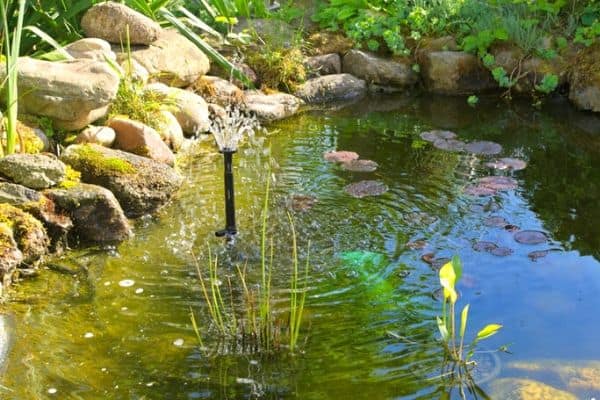
Pond maintenance
Once your pond is established you’ll need to regularly scoop out leaves and other debris that falls into the pond.
A long handled net makes this job easier or you can install a skimmer box if you don’t have time to do it manually.
You’ll also need to cut back any wilted or dying plants in and around the edges of the pond.
Adding beneficial bacteria to the pond can help to break down waste material in the pond quicker and keep the water cleaner.
To make your pond water a beautiful turquoise blue color, you can add a small amount of pond dye to give it a healthy appearance.
Keeping a fountain or waterfall running year-round can help to aerate the water and keep your fish healthy.
You can also use a floating pond de-icer to stop the surface of the water freezing during winter.
Once a year take your pump out of the pond and give the pump and filter a thorough clean.
You can store your pump in a deep section of the pond over winter where it’s not likely to freeze or you can submerge it in a bucket of water and store it in a heated garage or basement over the winter months.
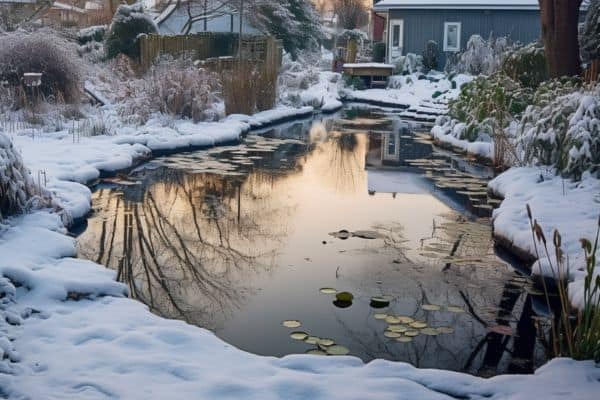
So there are some things to think about before building a new pond.
I hope this given you an insight into what’s involved in creating and maintaining a new backyard pond.
RELATED ARTICLES
- 10 Ways To Decorate Your Pond
- How to Build an Above Ground Pond
- How to Make Your Pond Bigger
- Winter Pond Maintenance
- How To Build A Natural Swimming Pond
Do you have any questions about setting up a new garden pond? Let me know in the comments below.
Are you on Pinterest? I have boards dedicated to Backyard Ponds and Pond Tips that you may find helpful.
